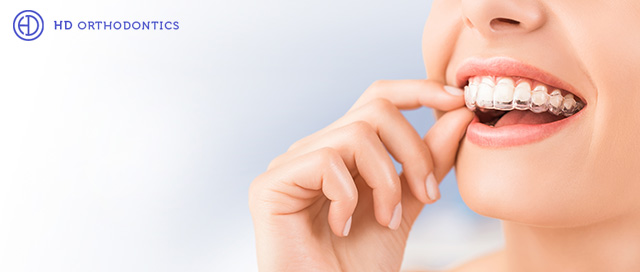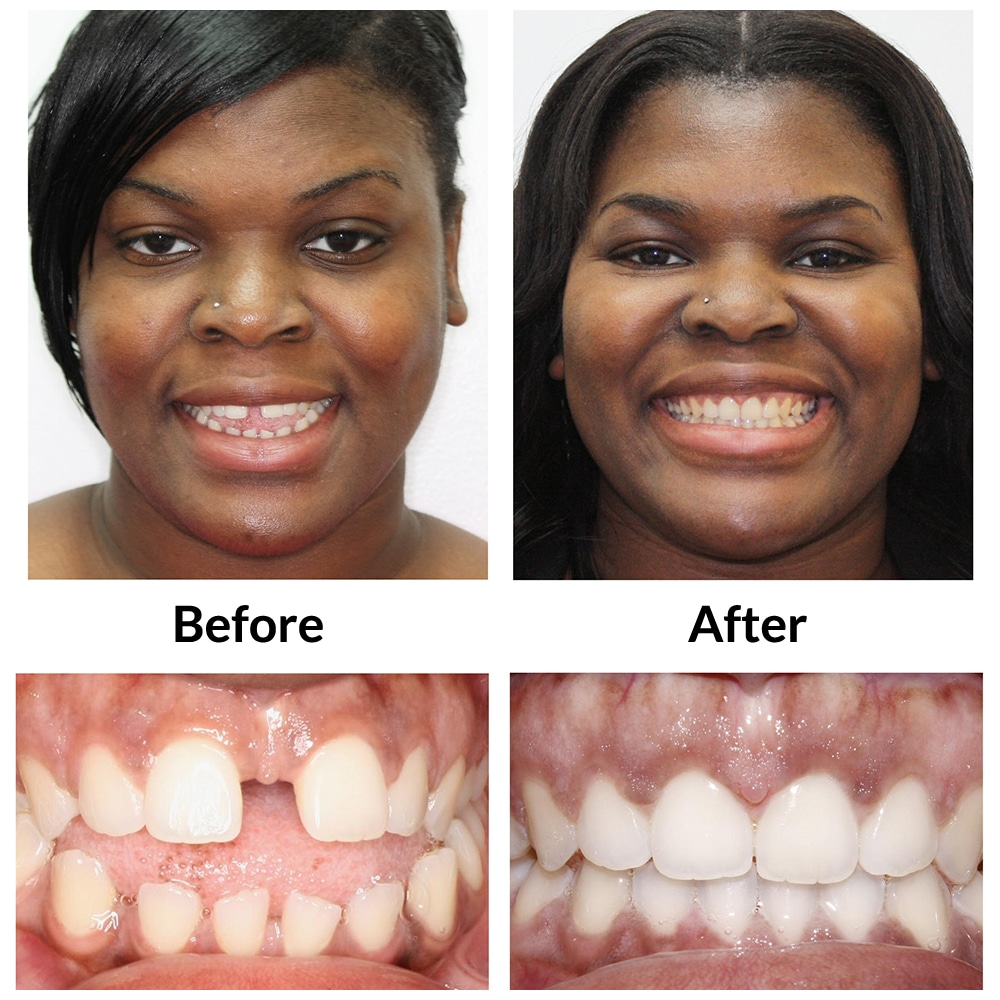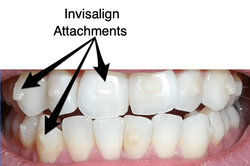Invisalign vs. Conventional Braces: Which Alternative Is Right for You?
When taking into consideration orthodontic therapy, the choice between Invisalign and standard braces offers a number of essential elements that warrant cautious analysis. Invisalign provides a very discreet alternative with detachable aligners, while standard dental braces provide an extra noticeable yet effective service for serious misalignment.
Review of Therapy Choices

In comparison, traditional dental braces contain steel brackets and cords that are bonded to the teeth. This technique uses continual stress in time to attain positioning. While reliable for intricate orthodontic problems, traditional braces call for routine check outs for modifications and can present difficulties in preserving oral health as a result of the difficulty of cleansing about cords and brackets.
Both choices have their values, and the option commonly depends upon specific dental problems, way of life choices, and client compliance. Inevitably, getting in touch with an orthodontic professional is critical for identifying one of the most suitable treatment strategy customized to specific demands. Comprehending the nuances of each choice can dramatically influence the general success of orthodontic therapy.
Visual Factors To Consider
A substantial element affecting the selection in between Invisalign and conventional braces is the aesthetic appeal each treatment provides. Invisalign aligners are crafted from clear plastic, making them essentially invisible when put on. This very discreet look is specifically appealing to young adults and adults that may feel self-conscious regarding their orthodontic treatment. The ability to maintain a natural smile throughout the positioning process can significantly enhance the person's confidence in professional and social setups.
On the other hand, standard dental braces contain steel braces and wires, which can be more noticeable. While developments in orthodontic technology have actually caused the development of smaller sized braces and tinted elastics, conventional braces still keep an even more obvious account. For some people, the presence of braces may hinder them from seeking necessary treatment.
Eventually, the option between Invisalign and typical braces may depend upon individual preferences concerning aesthetics. Patients that prioritize discretion often lean towards Invisalign, while those that are much less concerned concerning presence might opt for typical dental braces. Understanding the visual effects of each choice is essential for making an educated decision that straightens with one's lifestyle and choices.
Convenience and Convenience

In terms of ease, Invisalign aligners are removable, enabling people to appreciate their favored foods without restriction and keep optimum dental health. Cleaning and flossing are simplified, as the aligners can be secured throughout these regimens, whereas traditional dental braces require careful navigating around cables and brackets.
In addition, Invisalign's dynamic system permits for less orthodontic brows through. Individuals typically receive numerous collections of aligners at when, which can enhance the therapy process and minimize time spent in the orthodontist's chair. In comparison, traditional dental braces demand normal changes, making them less convenient for those with busy timetables. Invisalign. On the whole, the comfort and convenience of Invisalign make it an enticing selection for numerous individuals looking for orthodontic treatment.
Treatment Period and Efficiency
While both Invisalign and typical braces work in remedying dental imbalances, the period of therapy can differ considerably between the 2 alternatives. Usually, Invisalign therapy can take anywhere from 12 to 18 months, relying on the intricacy of the case. The clear aligners work by progressively changing teeth into their preferred positions, and regular follow-ups with an orthodontist help ensure development remains on track.
On the other hand, conventional dental braces frequently call for a longer commitment, generally varying from 18 months to three years. This is because of their set nature try this site and using cables and brackets, which can be a lot more reliable for serious imbalances and complicated cases (Invisalign). The therapy efficiency of standard dental click here for info braces is well-documented, as they enable specific modifications and higher control over tooth movement
Inevitably, the choice in between Invisalign and standard braces might depend upon both the awaited therapy period and the details dental problems at hand. Consulting with an orthodontist is crucial, as they can offer customized recommendations based on individual demands, guaranteeing the selected method lines up with desired durations and end results.
Expense Comparison and Insurance Policy Alternatives
Expense plays a substantial function in the decision-making procedure for people considering orthodontic treatment, whether choosing Invisalign or traditional dental braces. Generally, the cost of Invisalign varieties from $3,000 to $8,000, while standard braces normally set you back between $2,000 and $6,000. Variables affecting these expenses consist of the complexity of the case, the duration of therapy, and geographical area.
Several oral insurance policy strategies give partial protection for orthodontic treatments, however the specifics can vary extensively. Usually, standard braces may be much more regularly covered by insurance strategies compared to Invisalign, which some insurers categorize as an aesthetic treatment.
Furthermore, numerous orthodontic methods provide versatile layaway plan, making both treatment choices more easily accessible. Patients must ask concerning potential financing options and discounts for ahead of time repayments. Assessing the overall expense, including insurance policy advantages and layaway plan, is important for making an informed choice that lines up with both visual choices and budget considerations.

Final Thought
In summary, the choice between Invisalign and typical dental braces rests on numerous factors, including visual choices, convenience, therapy period, and expense. try this web-site Invisalign supplies a very discreet, removable alternative that assists in dental health and nutritional adaptability, while conventional braces may be better for intricate dental concerns and usually come with a lower rate point. Eventually, examination with an orthodontist is crucial to examine private situations and determine one of the most appropriate therapy choice for accomplishing ideal dental alignment.
When considering orthodontic therapy, the selection between Invisalign and traditional braces provides a number of essential aspects that warrant mindful examination.Comparing Invisalign and standard dental braces reveals distinct therapy alternatives for orthodontic improvement.While both Invisalign and typical dental braces are efficient in fixing oral imbalances, the period of therapy can vary substantially between the two choices.Cost plays a considerable duty in the decision-making procedure for people taking into consideration orthodontic treatment, whether opting for Invisalign or typical braces.In summary, the choice between Invisalign and typical braces pivots on several variables, including visual preferences, comfort, treatment period, and expense.